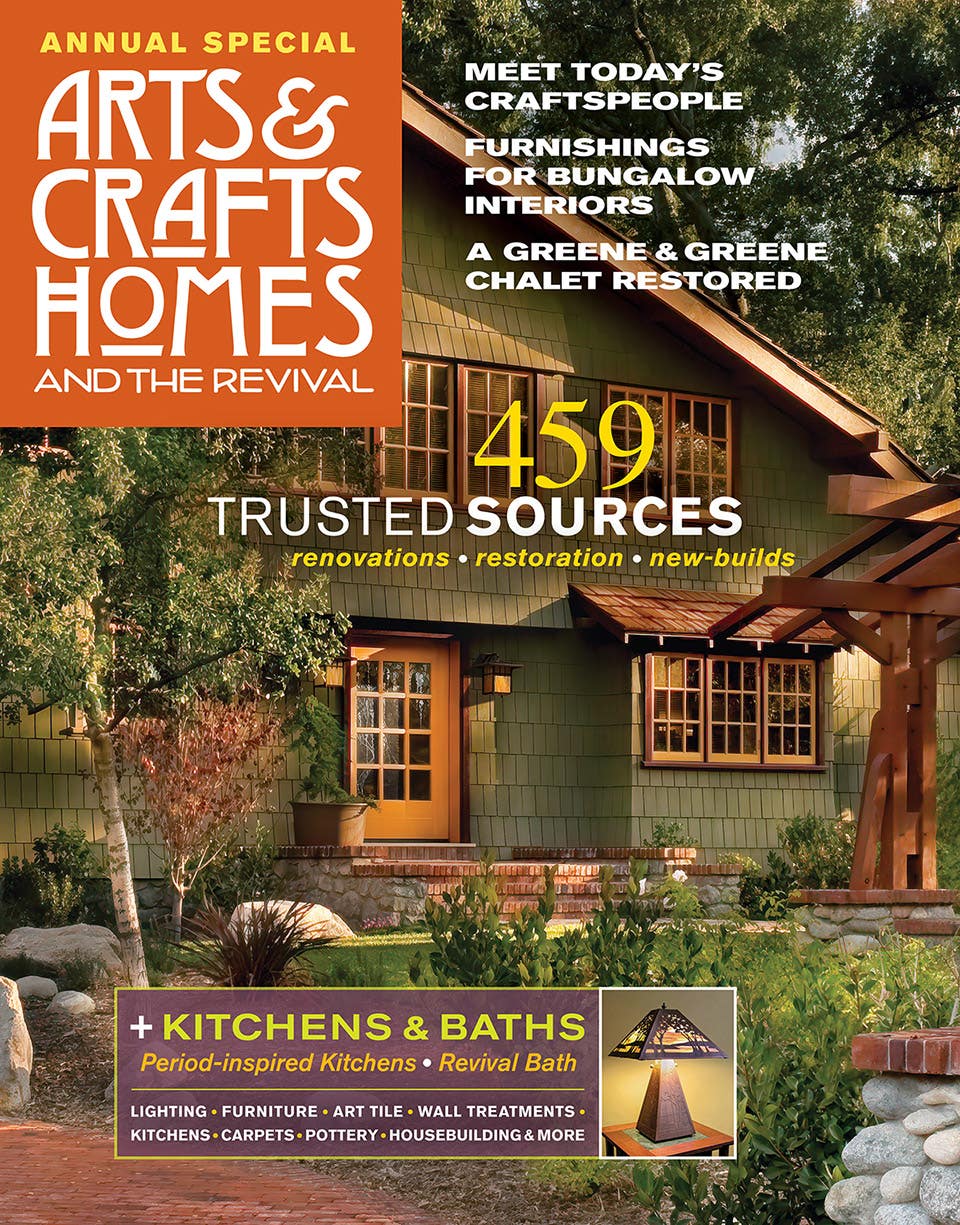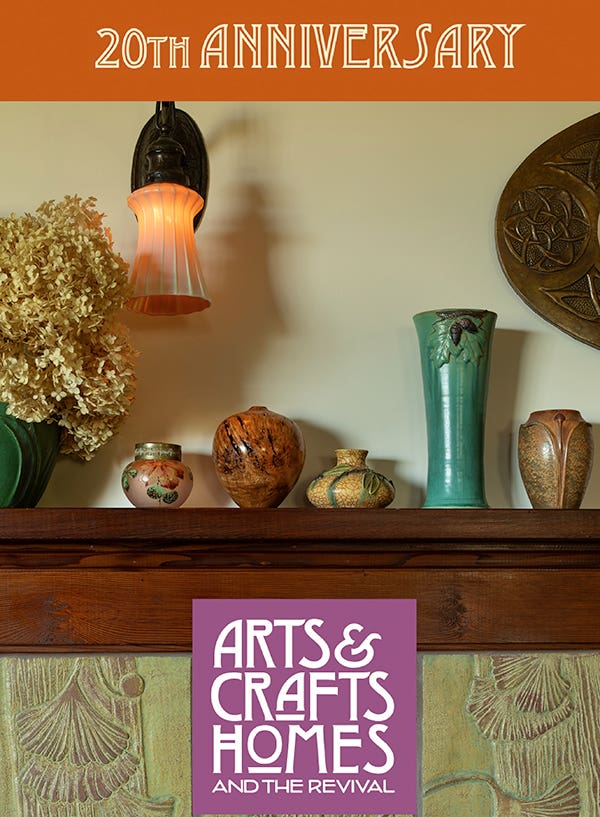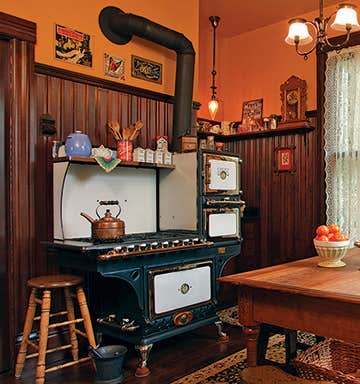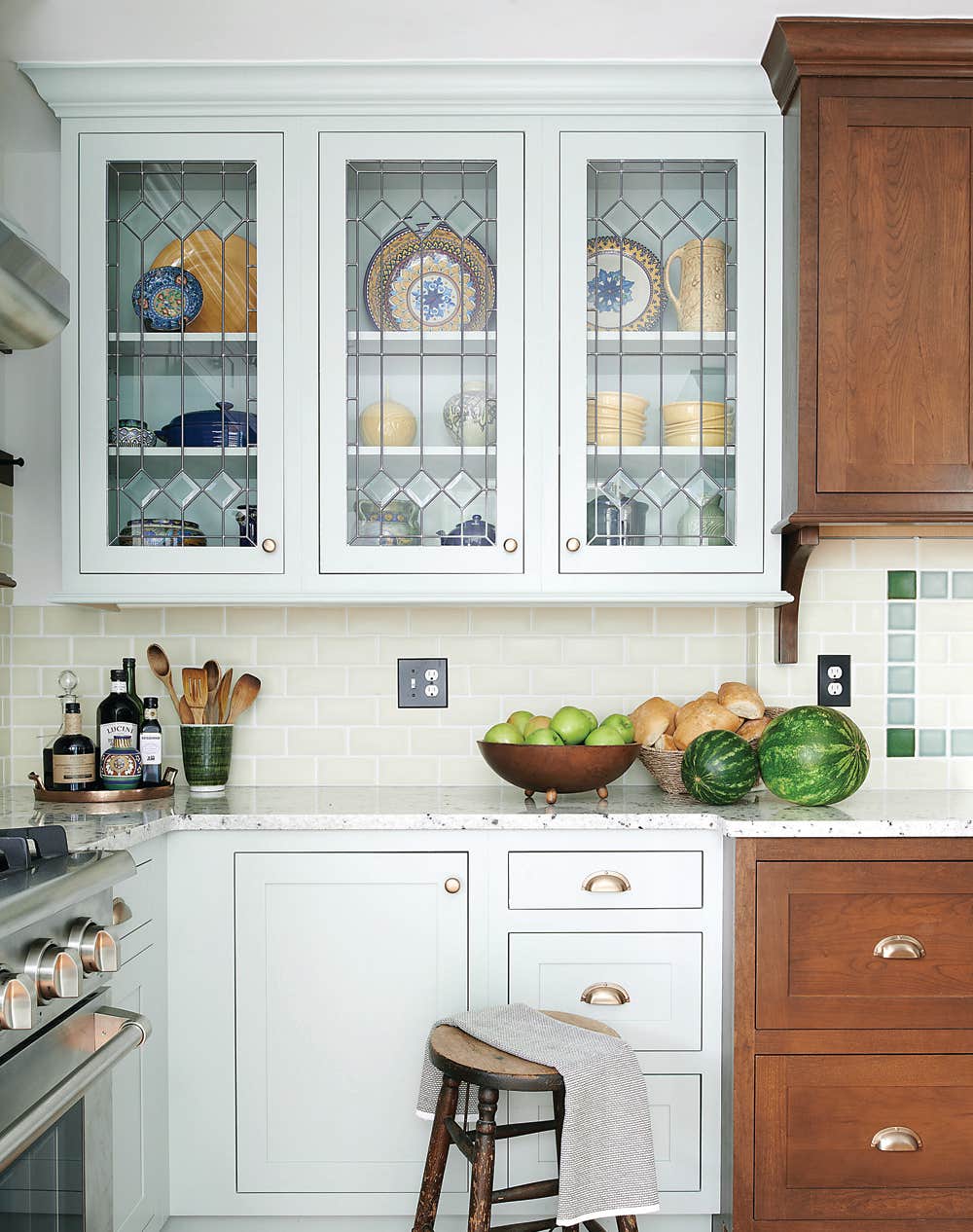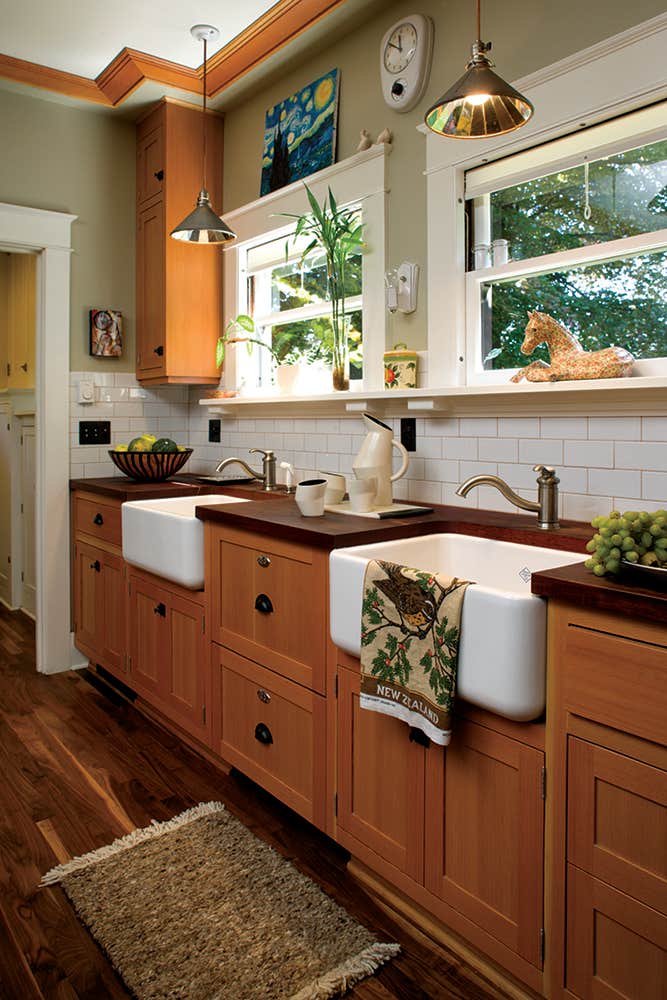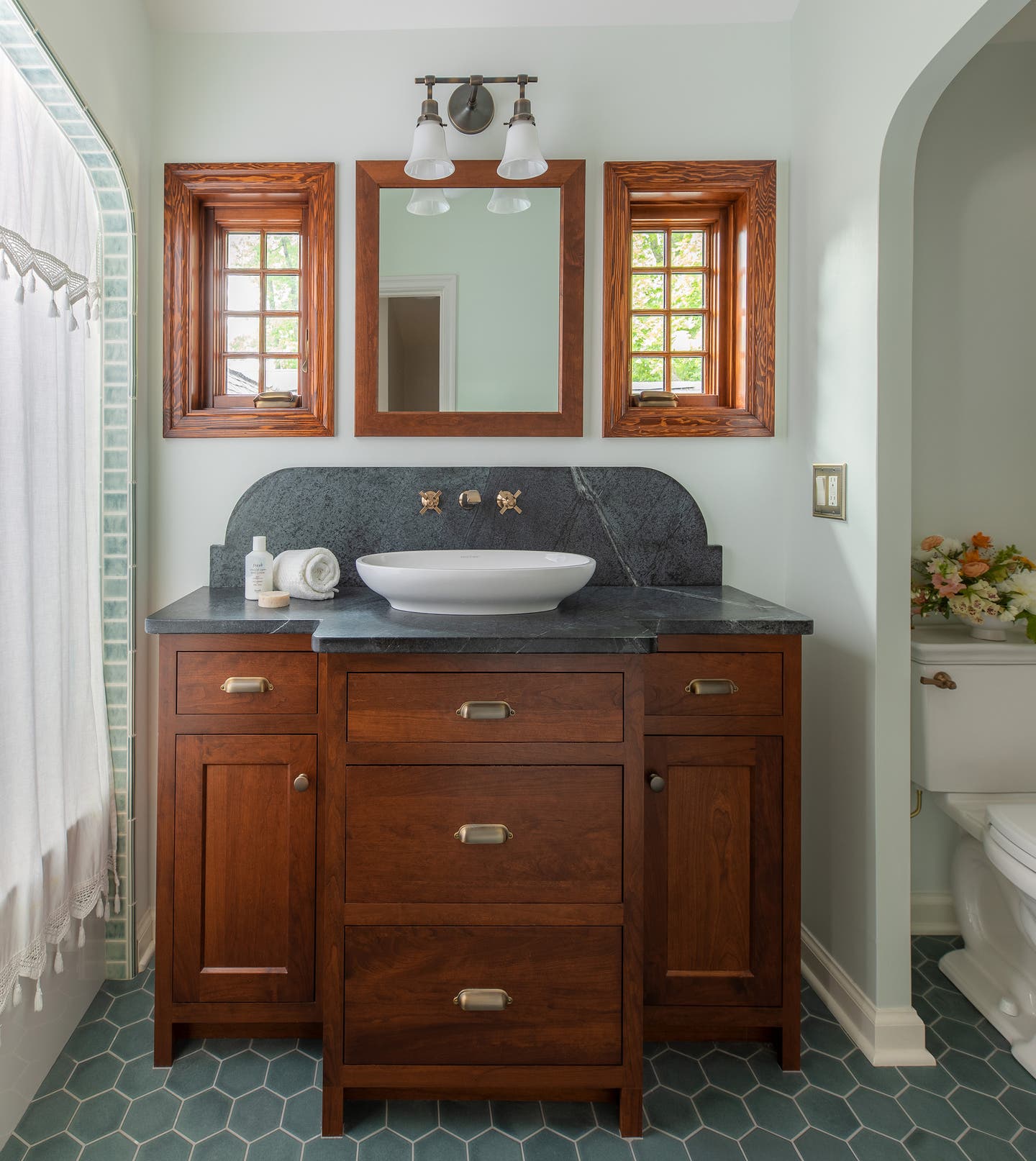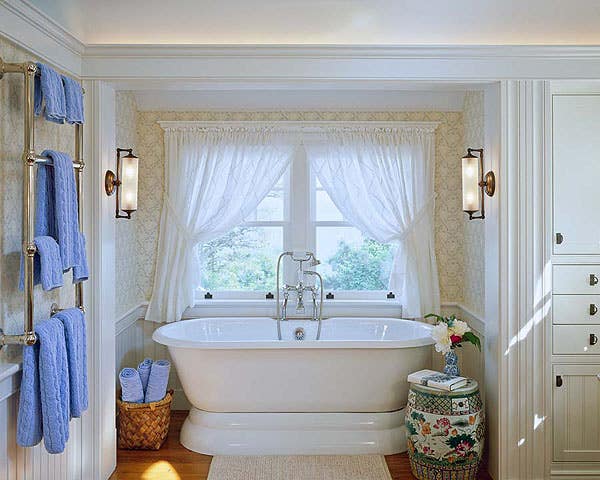A Cheery Revival Kitchen
For a new kitchen, a decorative wall of tile is a lighthearted foil to the gravitas of hardwood cabinets rendered in the style of Greene & Greene.
For a new kitchen, a decorative wall of tile is a lighthearted foil to the gravitas of hardwood cabinets rendered in the style of Greene & Greene. A tile mural and leaded-glass doors lend interest.
courtesy Crown Point Cabinetry
The house is in an old town on the North Shore of Long Island, in New York. Built in 1985, it had a vaguely Arts & Crafts revival air with Japanese influence. New owners wanted to push the design more toward Arts & Crafts. The kitchen, especially, needed a do-over; it had been a multi-purpose mashup of kitchen, laundry, closets, and family space. Crown Point Cabinetry took a lead role in the room’s renovation.
“The owner found us at the Architectural Digest Show, on the pier, in New York City,” says Fred Puksta, senior designer at Crown Point. “She had an idea of what she wanted and collaborated with our designer David Messier [now retired].”
“I have always been attracted to period Bungalows,” says Mary, the homeowner. “The design evolved from there,” given her knowledge of Pasadena houses and the residential work of Frank Lloyd Wright.
“Mary wanted a cloud-lift motif,” adds Puksta, referencing a rail detail used by Pasadena architects Charles and Henry Greene. Other must-haves included a large stove and large refrigerator, two sinks, art tile, and a separate dining area with additional, glass-front cabinets.
TIMELESS MATERIALS
From the red-oak flooring (original to the house) to cabinets and finishes, every element is time-tested and of high quality. The tile is hand-crafted. The stove hood is formed from stainless steel with bands of polished copper.
Kitchen cabinets feature Crown Point Cabinetry’s Monterey door with square inset face frames. The wood is Sapele with the Nutmeg finish. (Sapele is no longer available; the designers suggest cherry with a stain for a similar appearance.) Crown Point used pillow-top contrasting square pegs throughout. A buffet and a bar stand opposite from each other in the dining area.
Tile is the other style-defining characteristic of the room. All of it is from Motawi Tileworks of Ann Arbor, Michigan. The client asked for a scenic rather than abstract or repetitive design; the tile mural’s name is ‘Pine Landscape’. Accent colors punctuate the stove wall: Storm Blue, Lime, Sand, Autumn Brown, Cream, and Burnt Sienna.
courtesy Crown Point Cabinetry
“In terms of quality, appearance, and function, I’m extremely satisfied!” says Mary. “The new kitchen design honors the house; because of its artisan appeal and warmth, it will stand the test of time, an idea integral to the Arts & Crafts philosophy.”
Patricia Poore is Editor-in-chief of Old House Journal and Arts & Crafts Homes, as well as editorial director at Active Interest Media’s Home Group, overseeing New Old House, Traditional Building, and special-interest publications.
Poore joined Old House Journal when it was a Brooklyn-brownstoner newsletter in the late 1970s. She became owner and publisher and, except for the years 2002–2013, has been its editor. Poore founded the magazines Old-House Interiors (1995–2013) and Early Homes (2004–2017); their content is now available online and folded into Old-House Journal’s wider coverage. Poore also created GARBAGE magazine (1989–1994), the first unaffiliated environmental consumer magazine.
Poore has participated, hands-on, in several restorations, including her own homes: a 1911 brownstone in Park Slope, Brooklyn, and a 1904 Tudor–Shingle Style house in Gloucester, Massachusetts, where she brought up her boys and their wonderful dogs.

